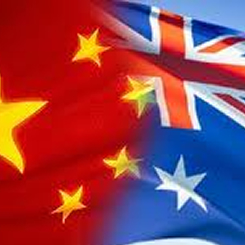
China or Australia? Electronics Company Needs to Switch On the Best Solution
“Sometimes when you innovate, you make mistakes. It is best to admit them quickly and get on with improving your other innovations.”Steve Jobs
Company Background
This Australian owned company designs, manufactures and markets a complete range of audio accessories for all two-way platforms. They are specialists in the area so the market is readily identified, but it is not large and is very competitive and. Established in 1998 and based in NSW, the owner identified that to be successful he needed to deliver quality products, at competitive prices supported by integrity of supply and support.
The Challenge
With a small market locally, this company looked to expand off-shore, but to be competitive in these markets, cost of manufacture had to be cut, and cut significantly.
The “foundation stone” of this was cheap manufacturing in China enabling distribution to the US and UK market as well as Australia. In addition to this “foundation stone”; provide rapid design and development capability in Australia, to meet the needs of the global customer base.
Sounds good so far…… With the benefit of 20/20 hindsight let’s see how this strategy went.
Background
For the last 27 years, Inform Founding Partner, David Burgess, has worked in manufacturing in Australia and SE Asia and has seen the rise of manufactured goods from China. The end result is a loss of manufacturing facilities, skills & jobs in Australia replaced by warehousing, distribution and logistics facilities, skills and jobs. But is this the generic answer for our future?
The answer is NO and David provides of this in this case study. It maybe a small example but it is a significant demonstration of Australian based manufacture is the best business solution.
In the beginning:
Demand was strong for the products and the distribution channels are in place. Production starts and the stocks are building in both the US and Australia. Sales are strong…looking good. However, complaints started to roll in; the products were not working or failing after a short time. An inspection of the stock holdings in both continents found a one in four defect rate on the high volume product lines. The damage control actions were to isolate the faulty products and to put their own quality assurance staff into the China manufacturing facility. Some damage was done in the market place and sales continued to grow….
Now the company had a mountain of faulty product it had paid for, cash was short and they needed to replace the stock so they ordered more.
Having got through that, what now…..????
The vision was still considered the correct path to take. So with cash very tight and the order book growing the decision to push on was made. The quality issues were resolved but the cost of having staff in China was eating into margins. As the sales grew so did the stocks of components in China. Some of these were imported from Europe and Australia to China for assembly. In addition, as the range of products grew the minimum production run size in China was increasing the stock of finished goods. Cash got tighter and progressively tighter.
Stop and Rethink time………???
By 2007 the business was still selling and growth was slowing and it should have been highly profitable so where was all the money going……let’s list now list the reason why:
- Freight costs: lead times from placement of order to despatch ex China factory was around five weeks forcing the use of air freight. Plus the added costs of clearance and associated documentation.
- Lead Times: the customers wanted their products delivered within 2 to 3 days of order placement, this is the industry norm. So stock of all product lines had to be held. In addition, since the GFC, the factory has cut its labour force and cannot respond quickly to peaks in demand.
- Quality Issues: while quality had improved, any defect product had to be replaced which resulted in more freight costs and more stock due to the minimum order quantity requirements.
- Communications: the amount of time communicating with the factory in China was excessive resulting in additional staff in Australia to manage factory orders.
Solution and Outcome
Faced with this situation the decision was made to set up manufacturing in Australia using imported Chinese equipment and machines, which by the way is very reasonably priced. This was done 18 months ago. The strategy was to get the high volume product made in China and to alter the design of some product lines so that China made partially completed products which would be finished in Australia to meet specific product specification as the order was received.
This has result in the following wins:
- Lower stock holdings throughout the business – MORE CASH available.
- Customers are getting their orders in the required lead time of 3 to 5 days.
- Quality issues are picked up before despatch.
- Gross margins are maintained as all the hidden costs are gone.
- Dead and slow moving stock is reducing each month – MORE CASH available.
- The staff who were talking to the China factory are now focussed on Sales.
- More staff are employed in Australia making products for domestic sales and export.
This is a real live case of an Australian manufacturing business “bucking the trend”.







